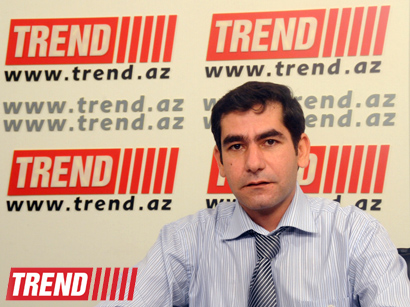Dalga Khatinoglu, Trend Persian News Service department chief
Congressional leaders prodded the Obama administration on May 15 to tighten the squeeze on Iran's economy.
There are several plans, which include banning gold export to Iran, preventing Iran from converting its forex currency reserves in abroad into dollar and euro, also enforcing full-cut over Iran's oil exports.
Responding The Americans new attempts to increase pressure on Tehran, Iranian president Mahmoud Ahmadinejad said on May 16 that managing the country without relying on oil export revenues and replacing oil revenues with revenues from mining reserves and agricultural exports is possible.
Ahmadinejad said there are 187 million square meters of cultivable lands in Iran, while only 14 million square meters are used for cultivation. He went on to say that Iran's extraction level of mines is only 80 billion tons, while it can increase to 800 billion tons per year.
Are Iran and International markets ready?
Petroleum makes up 80 percent of Iran's total export earnings and 50-60 percent of Iranian government's total revenue, according to the Economist Intelligence Unit.
The United States Energy Information Administration said on March 28 that Iran sold $69 billion worth of crude oil and condensates in 2012. This figure was $95 billion in 2011. Iran's oil and condensate export decreased from 2.5 mbpd in 2011 to 1.5 mbpd in 2012.
However, International Energy Agency's forecast published on May 14 indicates that global oil demand will increase by 6.1 million barrels a day, or 6.7 percent, to 96.7 million a day by 2018. It said that demand for OPEC's crude will be 30.4 million barrels a day in 2018, an increase of less than 1 percent from last year's call-on-OPEC of 30.12 million a day.
Considering Saudi Arabia's above 2 mbpd of unused oil production capacity, also Iraq's rapidly growing oil production, and no significant demand for OPEC oil output increase for next five years, it seems putting full-ban over Iran oil export is not a big challenge, especially because North American production is expected to grow by 3.9 million barrels a day between 2012 and 2018 according to IEA report.
On the other side, according to official statistics, Iran's agricultural and mining sectors account for respectively 10 percent and 20 percent of Iran's GDP, while Iran deeply depends on a huge amount of wheat, rice, gold and steel imports.
For instance Iranians yearly gold demand is 300 tons, but only 2 to 2.5 tons of gold is extracted from 12 domestic active mines and according to official statistics published by Geological Survey Organization of Iran, the total volume of country's 15 gold mines' reserves roughly reaches 320 tones, which equals to only one year of gold demands in the country. Thus, the gold storage is vital for Iran.
On the other hand, despite this fact that Iran has doubled exports of the steelmaking raw ingredient iron ore worth $3 billion during last solar year which ended on March 20, according to official Custom Administration's statistics the country also imported 2.8 million tons of crude steel and 3.2 million tons of steel products with $2.664 billion worth totally during the same period.
Regarding country's agricultural sector, Iran imported about $2.574 billion worth of wheat, $1.801 billion worth of maize, $1.5 billion worth of other cereals, $1.3 billion worth of rice and above $1 billion worth of sugar last solar year.
Iran also imported above $2 billion worth of cooking oil in last solar year.
With all the importing, it is unclear how Iran could have replaced crude oil revenues with mining reserves exports and agricultural exports.






